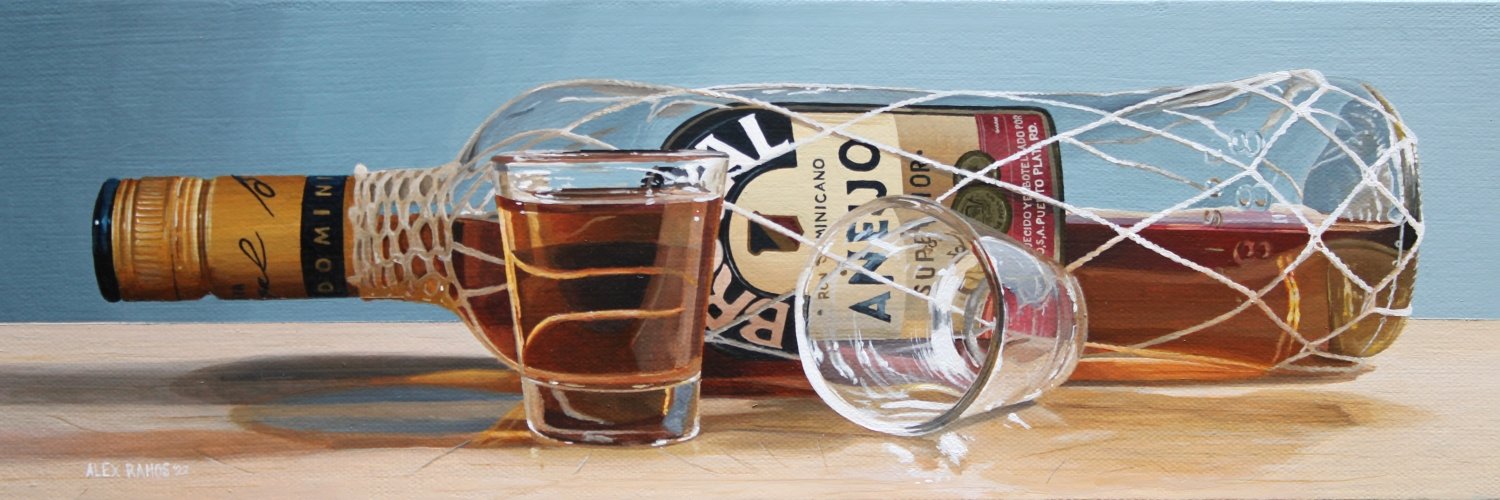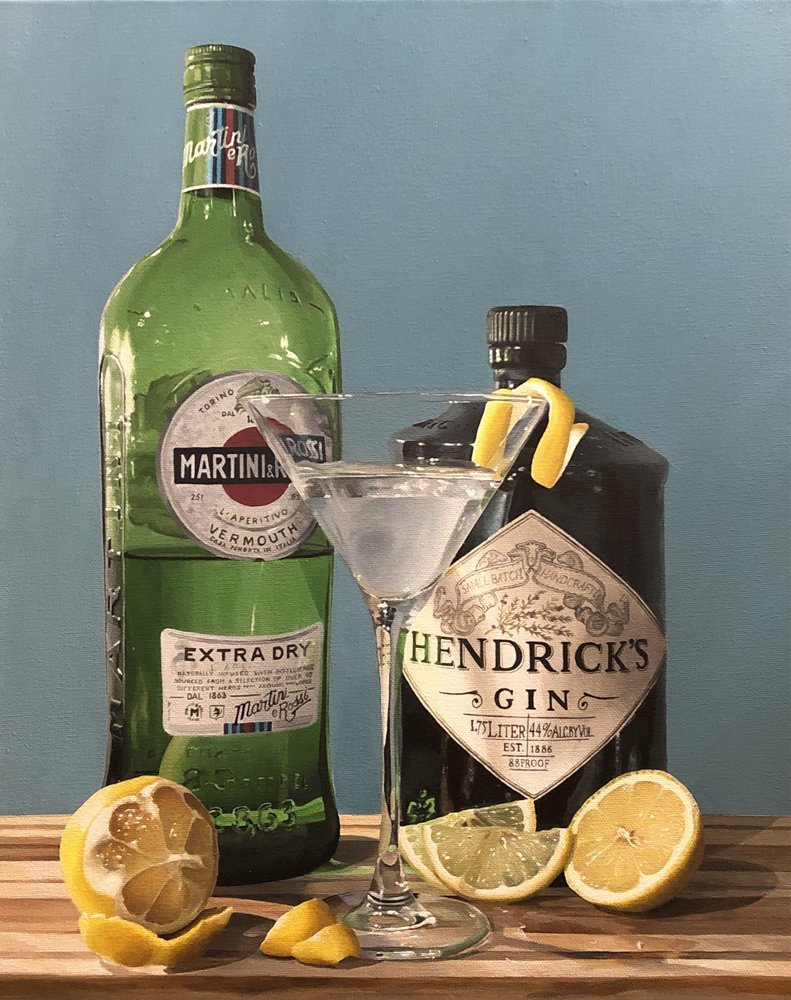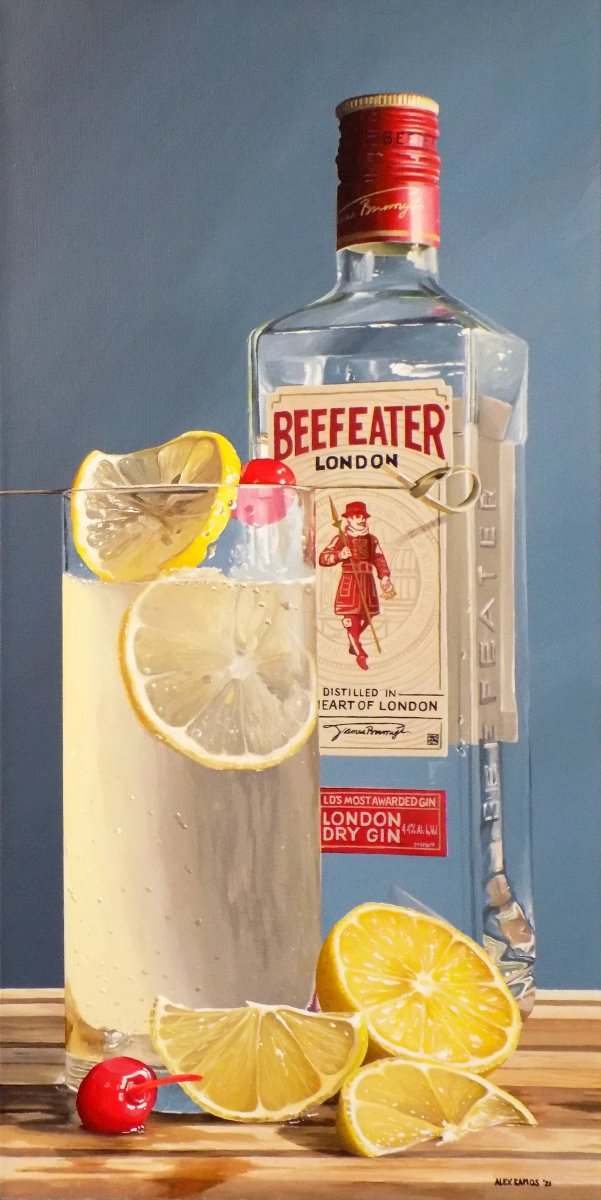Artist Alex Ramos
Congratulations to Alex Ramos for earning his place as a winner in the (Oct 2022) Monthly Art Award!
Who are you?
I was born and raised in rural upstate New York, but I’ve also spent time in Lincoln, NE, and Boston, and I eventually landed in Pennsylvania—Philadelphia for almost 7 years, State College for almost five. I went to college first to study music (I’m a classically trained clarinetist) but then adopted religious studies as a second major. I went on to finish a Master’s degree and then a PhD in religious studies. You might notice I haven’t mentioned visual arts. That’s become I’m an entirely self- taught painter; I haven’t taken an art class since high school, and I didn’t begin painting in earnest until I was in the first year of my religious studies PhD program.
On my first winter break visit home during my PhD program, I decided I wanted to do an art project with my free time, and I found it so enjoyable that I kept painting as a stress-relief activity through the course of the PhD program. Since completing my degree, I’ve been working in academic publishing. I’m currently Production Editor at Penn State University Press, where I oversee parts of the copyediting and proofreading processes. My artistic pursuits are mostly an evening activity; I usually get an hour or two of time at the easel before bedtime. Though it will probably remain a part-time pursuit (I actually enjoy the freedom that comes with being able to paint but not depend on it for my livelihood!), I’ve been seeking ever greater opportunities to share, promote, and sell my work in the last five years or so.
“Amaretto Stone Sour” (Winning Work)
Acrylic on Gesso Board
By Alex Ramos
What inspired you to utilize painting as a medium?
I sort of fell into it. When I picked up painting, I hadn’t done much visual art since high school. And in my high school days, I had mostly been doing pencil drawings and computer graphics. I came to painting largely on a whim. My mom had a lot of old acrylics on hand from when she used to do reverse-glass painting. So that’s how I came to start using acrylics. And once I started, that was the medium I kept with. I was living at the time in a small apartment in Philadelphia, and trying to use oil paint in that space would have been to fumy anyhow. It didn’t take me too long before I developed a solid grasp for getting the colors and look I wanted out of acrylic, and so I’ve never second guessed my choice.
“Blood Orange Mojito”
Acrylic on Stretched Canvas
By Alex Ramos
How would you describe your work?
My current work is probably best described as photorealistic still life. I often hesitate to use the “photorealistic” label and simply refer to them as simply “realistic,” worrying that my work isn’t quite intricate or detailed enough to fit with conceptions of that category. But whenever I display at an art festival or gallery, many people clearly think they’re seeing a photograph until they’re informed by me or a sign that it is in fact a painting. So I suppose “photorealistic” is perfectly apt. I am most often drawn these days to subjects with vivid colors and significant contrast. I also love subjects with a lot of complexity, such as glass, especially when it concerns how light behaves against and through the objects and surfaces in the tableau.
“Bottoms Up”
Acrylic on Stretched Canvas
By Alex Ramos
Can you discuss the inspiration and thought process behind “Amaretto Stone Sour”?
The Amaretto Sour is one of my favorite cocktails. But before preparing for this painting, I had never made or had an Amaretto Stone Sour. The key difference between the two is orange juice. Part of my inspiration for doing this was my recent work in the kitchen making some dried, candied orange wheels for use as garnishes. When I do a cocktail painting, I often try to incorporate most of the ingredients in the assemblage. The amaretto bottle was always going to be the star, set in the center, with its intricate glass works patterns. It is accompanied by a nondescript stopper-topped bottle with my own homemade simple syrup. In lieu of including orange juice as a third bottle with liquids, I used the jar of candied oranges to represent them. And of course, abundant lemon pieces are scattered about the cutting board to add some visual garnish and color to the piece.
“Hendricks Martini”
Acrylic on Stretched Canvas
By Alex Ramos
Can you walk us through the technical steps of creating “Amaretto Stone Sour”?
I almost always work from a photo. I do all my own staging and photography, selecting a background (often the blue walls of my kitchen), a surface (usually wood or stone), and the various elements I am considering incorporating. I make a variety of arrangements and take dozens of photos, making adjustments to composition, lighting, and angle of each photo. Once I’ve captured a wide array of images, I sift through them to select a few that meet my criteria (or start over). I then make a selection from my finalists.
Next, I grid out my canvas (or in this case a gesso board) and then in photo-editing software grid out the photo. Using the grid and a ruler, I then sketch out the painting, noting not only the outlines but also the major contours in color and value. If there is text, I’ll often write that in at this stage as well, while I still have the grid to help me with the placement and spacing. Especially for paintings with a solid or gradient background, I start with that. Sometimes I use masking tape for this step, covering over the foreground subjects. I use tracing paper and a razor blade to cut the contours in the masking tape before applying it. For the background, I mix enough background color for the job and then, working quickly, apply to the background, adding some white, black, and blue as necessary to get the variations in the value. I use a mop brush to smooth out the lines in the gradient. I sometimes use a retarder to slow the drying and give myself a few more minutes to blend.
Once I move on to the foreground subjects, I pick an element and begin blocking in the colors, trying to get close to the final color and value, though often a bit lighter. I rarely start with a flat color across a large swath of the canvas, unless I know it’s a color that will require lots of layering, like the yellows in the lemons here. In this painting, I began with the bottles, using the background color as a base and lightning as needed, then filling in the colors of the labels, cap, and stopper. Oftentimes, I won’t finish any given element of the painting until I’ve blocked in the whole canvas. In this painting, however, I mostly finished work on the bottles and jar before turning my attention to the glass and lemons in the foreground. I wrapped up work with some touch-ups on the label and glints in the glass.
You can see some glimpses of this process by looking at the progress photos from this project on my Instagram account.
“Bramble”
Acrylic on Stretched Canvas
By Alex Ramos
What do you hope to communicate to an audience with your work?
Painting realistic still life has taught me to pay closer attention to the things we encounter on a regular basis—often without contemplating their details and intricacies. One of my goals as a painter is to get my audience to slow down and appreciate the everyday in a new light, to take in the nuances and details they may never have noticed or considered before. When painting food and drink, at my most aspirational, I hope to induce a sense of synesthesia in the viewer, triggering the experiences of taste and texture through the eyes.
“When Life Gives You Lemons”
Acrylic on Stretched Canvas
By Alex Ramos
Have you experimented with other mediums?
Not really. Back in the early 2000s I used to draw sci-fi sketches in pencil and create 3D computer models for video games, and I’ve done a handful of colored pencil or watercolor doodles, but nothing I would show to the world. There may come a time where I want to explore something else, but not anytime soon.
“Citrus”
Acrylic on Stretched Canvas
By Alex Ramos
Can you talk about your biggest learning experience during the process of creating your work?
It’s difficult to pinpoint a single learning experience that has been formative. Since I taught myself, my early years were full of trial and error. My early experimentation was a series of slight adjustments or limited attempts at different approaches to creating my vision on the canvas. Nothing in my painting experience has led to a dramatic shift or breakthrough. I’d say the closest thing to a dramatic change in my work was when I finally decided to start varnishing my works and got up the nerve to do so. I was terrified I would ruin one of my carefully crafted paintings in the process. Once I made that shift, though, and saw how it really evened out the reflectiveness of the different colors and enriched the chroma of the colors and smoothed out the texture, there was no going back.
“Jumbo Blueberries”
Acrylic on Stretched Canvas
By Alex Ramos
Can you discuss your biggest success since starting your artistic journey?
This year’s Central Pennsylvania Festival of the Arts felt like my biggest success. I’m only a part-time artist, and I haven’t had a lot of time to devote to seeking out galleries or contests, and I can only manage participating in one or two fine arts fairs a year at this stage of my life. But I’m lucky to live in a town with a fantastic annual festival, and I participated in it for the second time this year (after two years of pandemic hiatus). It felt like a real breakout event for me—I won two separate awards, made significant sales of not just prints but original paintings too, and generally felt like I was gaining some local recognition.
“Nature’s Rubies”
Acrylic on Stretched Canvas
By Alex Ramos
What projects are you working on currently?
I’ve been working on some commissioned pieces over the last couple months. One I just finished up is a 16x20 painting of a classic Martini with Hendrick’s gin and Martini Rossi vermouth bottles. I am very happy with how it came out. And I’m currently working on a similarly sized painting of a glass of Lagavulin scotch with bleu cheese and crackers. Once these are done, I’ll probably knock out some quick small paintings and then move on to another project I’m really excited about: a 24x24 painting of one of my favorite cocktails—a Bramble—with a vibrant blue Bombay Sapphire bottle.
“A Taste Of Summer”
Acrylic on Stretched Canvas
By Alex Ramos
What is your dream project or piece you hope to accomplish?
I’m not sure I have one. I flit from subject to subject pretty quickly, and I don’t know that there’s ever been some subject that I’ve been too intimidated to take on. My most ambitious aspirations right now are to take on some bigger canvases—I completed a 24x36 inch painting this summer that I’m immensely proud of, and I have two similarly sized canvas I intend to use in the next year or so. But some day, if I ever find myself with more than a couple hours a day to paint, I might aspire to something even larger. Right now, though, I’d like to stick to works I can finish within a couple months at most. I like to limit myself to one or two projects at a time, and I get a little antsy if I’m spending more than two months on the same thing.
“Gourds and Corn”
Acrylic on Stretched Canvas
By Alex Ramos
Lastly, I like to ask everyone what advice they would give to their fellow artists, what is your advice?
For professionals, I’d say to never lose sight of what brings you joy in making art, and always carve some time out for yourself. I’m only a part-time artist, so I don’t feel as much pressure to make sales and target my paintings for a market as I imagine many early career full-time artists may. But I do often have long periods where I am working on commissioned pieces, which may or may not bring me a lot of personal joy. So in between these, I always try to do a little project of my own choosing.
For amateurs or beginners, I’d recommend just setting time to regularly work on your craft. Every time you’re looking to start a new project, pick something that has a new challenge. Try new things, or approach a similar task in a different way. Explore what feels right for you in creating your art. Hear other’s advice, and consider it, but feel free to reject it if it doesn’t feel true to you or your art.










